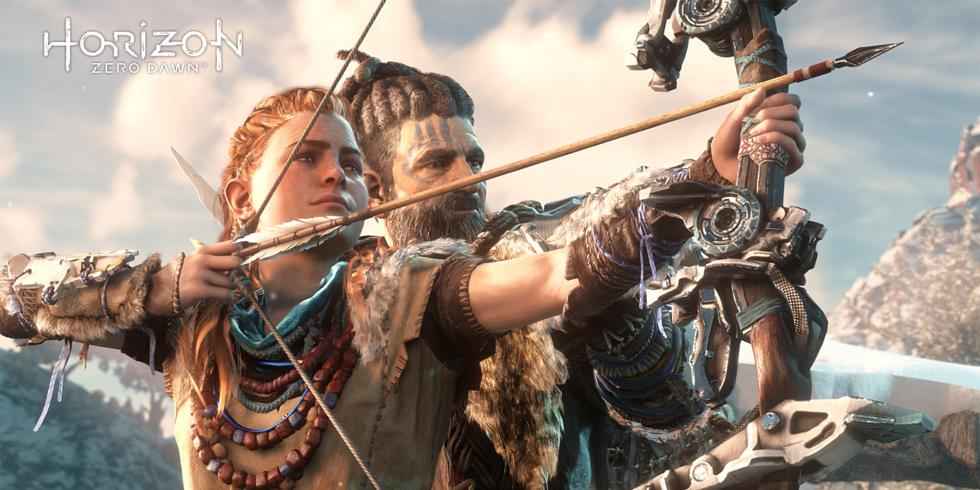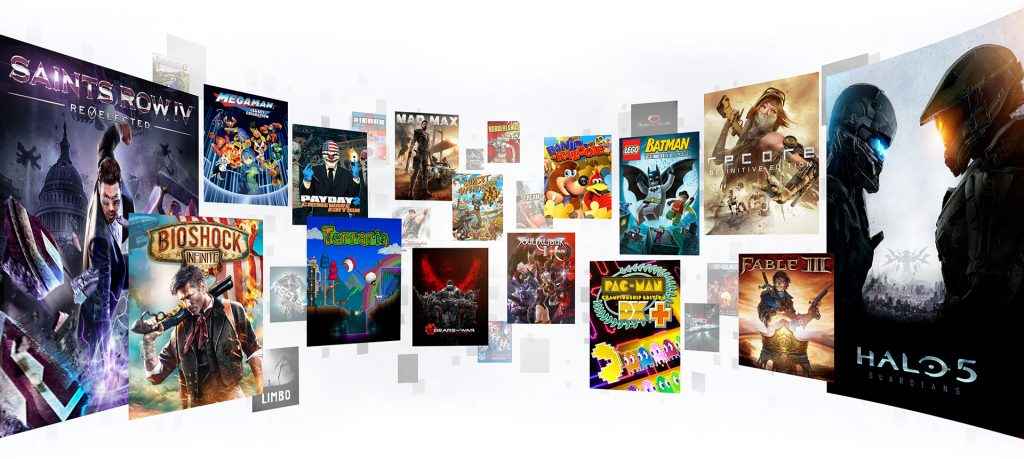It goes without saying that in terms of raw sales, the PS4 has been ravenous this generation.
Despite assertions prior to launch that consoles were on their ‘deathbed’ so to speak, Sony’s flagship system has continued to surpass expectations, garnering a mammoth 80 million-strong install base and staving off the perceived threat of the mobile market in the process.
Though some of the more insidious practices associated with ‘free-to-play’ have creeped into many retail releases, (mainly by way of loot boxes, card packs, and other forms of microtransactions) Sony’s saving grace has been its ability to churn out a near-inordinate amount of PS4-exclusive hits over the past calendar year and keep folk firmly planted in front of televisions the world over.
Truth be told, the PS4’s runaway success has thrown shade on what’s been a competent showing from Microsoft this generation. In spite of a disastrous narrative surrounding its reveal, the Xbox One and its various iterations have gone on to sell roughly 40 million units, though it’s difficult to pin down an exact figure as Microsoft neglects to officially share such information.
Through pro-consumer initiatives such as backwards compatibility, Xbox Game Pass, and ‘Play Anywhere’ – effectively forfeiting the concept of a console-only exclusive – Microsoft has elicited a lot of goodwill from gamers over the past four years, but its Achilles heel has consistently been the dearth of console exclusives appearing on the system overall.

This late in the game it’s no surprise, then, that Microsoft has decided to try and course correct with what can only be described as its most drastic initiative yet. Starting with Rare’s Sea of Thieves in March, all Xbox One X exclusives will be available on Xbox Game Pass for download day and date with their retail counterparts. For those unaware, Game Pass – much like that of PlayStation Now barring the streaming aspect – is a Netflix-like service that allows you to download and play full retail games for a set subscription fee of $9.99 per month.
On the face of things, it seems like a no-brainer for consumers; fancy playing the latest Gears of War and/or Halo? Instead of paying two lots of $60 upfront as is the traditional way you can get your fill in a month for a meagre $9.99 – a mammoth cost saver by all accounts, especially when you factor in the plethora of other games available on the service.
Microsoft is wholly aware of its poor output when it comes to exclusive releases – just watching the Xbox One X reveal overtly shows that – so it’s safe to say that they’ve crunched the numbers and decided that relative to their upcoming release schedule this initiative makes the most business sense. Regardless of cost, they’re also acutely aware that they have to do something to shift the narrative and recover some ground in the console stakes.

If that means deviating away from the traditional model and pushing headfirst into what many presume will be a predominantly digital future, then so be it – they may well gain an assured foothold in a new way of video game consumption ahead of Sony. What’s more interesting, however, is just how this system will actually manifest itself in the long term, and just how Microsoft intends to optimize its potential for profit going forward. The trends set herein, coupled with their success or indeed failure, will undoubtedly affect how Sony views its own ecosystem with the PS4 and beyond.
It’s an incredibly bold move on Microsoft’s part. If we consider the console’s install base of around 40 million, and take one of its most prominent exclusives in Gears of War 4, the numbers start to paint a particular picture. Once you factor in crossplay with PC, it’s likely around 12 percent of Xbox One players bought Gears of War 4 – an entry in a franchise purported to be one of the biggest in the world.
And that’s an ambitious estimate. Hell, roughly 6 or 7 percent of PlayStation owners booted up last year’s Horizon Zero Dawn. Fact is, despite the engrained narrative, there rarely ever is a ‘system seller’ for a console anymore, and whilst it can help massively, there are multiple factors that play a part in someone opting into the purchase of a system.
It goes without saying that with future exclusives being on Game Pass from day-one, those aforementioned percentages will increase tenfold, opening audiences to franchises that they hadn’t previously dipped into. As a result, adopting a subscription-based model as a console’s primary means of delivering content to its users raises some concern, too – especially in light of debacles involving loot boxes and persistent game worlds that plagued gaming for the latter half of last year. While there is of course an inherent ease of use in such a model – Microsoft will be banking on the lapsed customer who will just let their subscription automatically renew just like the many who are guilty of the same with Netflix – it’s also ripe for exploitation from different sides.
With a potential user base of millions, and likewise 100s of games to choose from, it’s within the realms of possibility that Microsoft will look to tailor its first-party line-up to take advantage of such an ecosystem. Aside from primetime space in terms of advertising, having that many people with access to your latest release surely creates a more prominent avenue for exploring ways of player retention; creating an ever-changing environment where people are encouraged to continuously spend money beyond their initial subscription fee.
Simply put, it could provoke Microsoft to forgo single-player experiences in favour of more expansive, multiplayer-centric worlds where players can purchase microtransactions for upgrades and in-game items à la last year’s Forza Motorsport 7, amongst many others.
The push towards this sort of model in full-retail titles is certainly en vogue, with the Star Wars Battlefront II and even Need for Speed Payback provoking ire within gaming communities. And that’s just with publisher Electronic Arts. We’ve seen rumours (which, to be fair, have since been denied) that before the aforementioned fallout from Star Wars Battlefront II’s egregious money-making tactics the team behind Halo was exploring ways of expanding its own loot box-type system, despite the fact that Halo 6 is yet to even be formally revealed.
And it’s no secret that publishers are actively researching ways as well, going so far as to patent match-making techniques to ensure player retention.
Another aspect worth mentioning is the cyclical nature of content on subscription-based models such as Game Pass – players would be beholden to a system which would see games only having a limited time on the service before their license expires. First-party games could possibly stay in perpetuity, sure, but it’s undoubted that third-party titles would come and go, so what would that mean for people who have purchased DLC for said titles?
Microsoft also has its work cut out convincing top-tier publishers to get involved with their biggest releases – it’s near-impossible to imagine that investors would take kindly to the likes of Anthem being available for Games Pass unless it’s been out in the wild for a significant amount of time first.
Such is the balance between physical and digital copies of games, Microsoft’s decision to go whole hog on Games Pass has already resulted in Austrian retailer ‘Gameware’ deciding to not stock Xbox consoles since it looks as if ‘’Microsoft alone then wants to profit off of the sales of software.”
People often question the reason for pricing on PSN being parable to retail stores given the fact that Sony’s cutting out the middleman by selling directly to consumers but it’s simply because Sony, and indeed Microsoft, needs retailers to actually sell its console. If you undercut a retailer’s pricing, you can bet many outlets would follow the trend set by Gameware, and that would would result in less places to actually pick up a console.
For the moment, Sony is in an enviable place – they’re selling consoles in record numbers, have an incredible portfolio of releases slated for this year, and are showing no signs of slowing down. But they mustn’t rest of their laurels.
The adoption of Game Pass by Xbox may have an effect on how third-party games are composed, pushing them further down the persistent world route, with subscription-based models cheapening the concept of a traditional $60 retail release. Beyond that, Game Pass’ potential success could mean Sony revamps its own PlayStation Now service to better challenge on the digital front.
What we need to see, however, is more of the same: great single-player games, stories, and experiences. The kind of stuff that’s been Sony’s bread and butter for the past two-or-so years. The fact that Microsoft is coming out swinging and trying desperately to change the gaming landscape is commendable, but we’re ultimately left wondering at what cost? Only time will tell, but you can bet that whatever the future holds, Sony will react accordingly.

